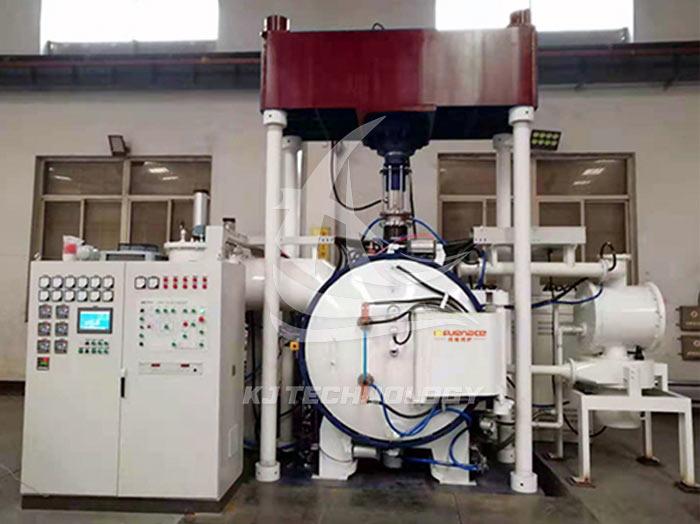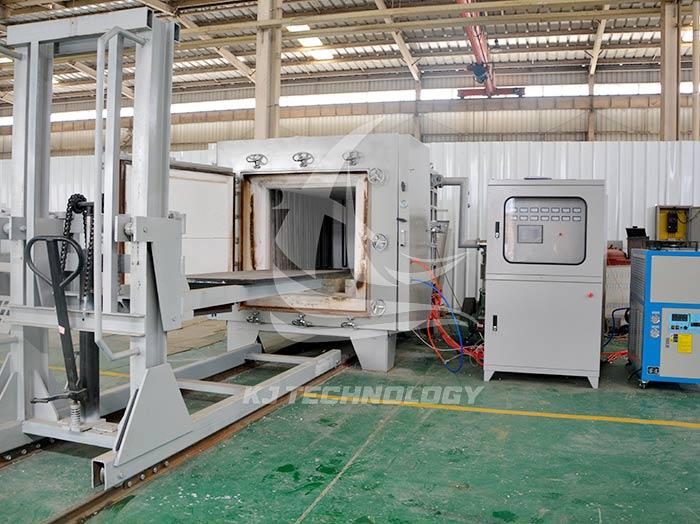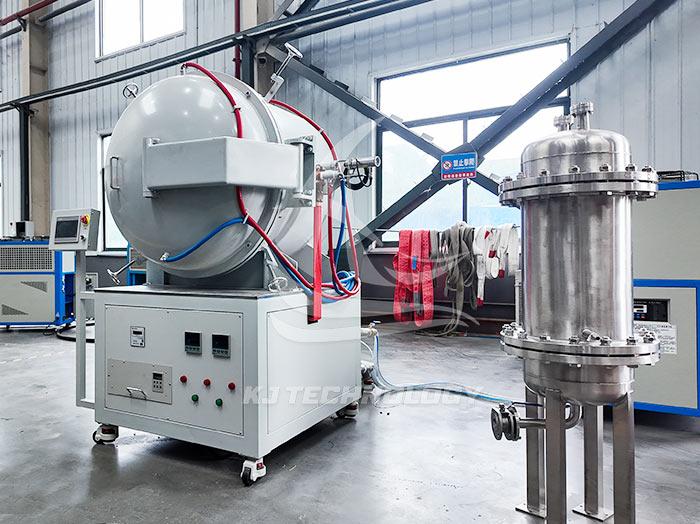Application of Aluminum Brazing Vacuum Furnace in the Automotive Manufacturing Industry
 07-03-2025 Author: KJ technology
07-03-2025 Author: KJ technology
The application of aluminum brazing vacuum furnace in the automotive manufacturing industry is extensive and critical, mainly reflected in the mass production of heat exchangers, precision connection of key components, lightweight and high-performance material processing, efficient manufacturing of complex structures, and environmental protection and cost control. The specific analysis is as follows:
1. Mass production of heat exchangers: improving efficiency and quality
Aluminum brazing vacuum furnace is the core production equipment for aluminum radiators such as automotive air conditioning evaporators, condensers, intercoolers, and oil coolers. It achieves continuous production through nitrogen protection atmosphere and non corrosive flux, significantly improving efficiency and quality:
Efficiency improvement: The vacuum environment eliminates oxide films, and the solder material has excellent wetting properties, enabling synchronous brazing of multiple parts. For example, after a certain automobile manufacturer switched to vacuum brazing, the daily production capacity of air conditioning evaporators increased from 500 pieces to 1500 pieces, and the production cycle was shortened by 60%.
Quality optimization: The brazing strength reaches over 85% of the base material, the air leakage rate is reduced from 5% to 0.1%, the product qualification rate is increased to 99.5%, and the annual repair cost is saved by more than 10 million yuan.
2. Precise connection of key components: ensuring performance and reliability
Aluminum brazing vacuum furnace is suitable for brazing key components such as engine oil pan, transmission valve body, stainless steel carrier of exhaust purifier, etc. Its advantages are:
Low temperature connection: The brazing temperature is lower than the melting point of the base material (such as about 600 ℃ for aluminum alloy) to avoid high-temperature deformation and ensure component accuracy. For example, the flatness error of the engine oil pan after brazing is ≤ 0.1mm, which meets the high-precision assembly requirements.
Heterogeneous material connection: It can achieve brazing of dissimilar materials such as aluminum alloy and stainless steel, ceramics and metals, meeting the dual requirements of lightweight and high-performance. For example, the titanium alloy shell and ceramic sealing ring of a certain satellite fuel tank are fused at the atomic level through vacuum brazing, and the sealing reliability reaches the leakage rate standard of 10 ⁻⁹ Pa · m ³/s.
3. Lightweight and high-performance material processing: driving technological upgrades
With the transformation of the automotive industry towards lightweight and high-performance, aluminum brazing vacuum furnaces play a key role in the following areas:
High strength aluminum alloy: The Tesla Model Y body uses high-strength aluminum alloy components, which are heat-treated in a vacuum furnace to achieve lightweight while ensuring strength, helping to increase the vehicle's range by 10%.
Titanium alloy and high-temperature alloy: The vacuum brazing furnace can process components such as titanium alloy turbine blades and high-temperature alloy combustion chambers. Through precise temperature control (± 1 ℃) and uniform heating, the material properties meet the design requirements. For example, after vacuum furnace heat treatment, the high-temperature service life of the engine blades of the Boeing 787 aircraft is extended by 30%.
4. Efficient Manufacturing of Complex Structures: Reducing Costs and Cycles
Aluminum brazing vacuum furnace achieves efficient manufacturing of complex structures through the following technologies:
Partition heating and intelligent temperature control: Adopting multi zone independent temperature control technology, the temperature uniformity is within ± 3 ℃, ensuring consistent quality in mass production. For example, the brazing of honeycomb sealed structures in aircraft engines can fill hundreds of micropores in one furnace, increasing production efficiency by 5 times.
Automated process management: Integrating modules such as flux spraying, electric drying, brazing heating, and air cooling slag removal to achieve full process automation. For example, a certain model of vacuum furnace is equipped with multiple argon gas nozzles, which can adjust the airflow for different parts of the workpiece to ensure consistent brazing quality.
5. Environmental Protection and Cost Control: Meeting Sustainable Development Needs
Aluminum brazing vacuum furnace reduces environmental impact and production costs through the following methods:
Soldering free process: eliminating oxidation in a vacuum environment, eliminating the need for brazing agents, reducing material costs, and simplifying cleaning processes. For example, after a certain enterprise switched to nitrogen protection, the consumption of flux decreased by 40%, while reducing wastewater discharge.
Exhaust gas treatment system: Some improved models adopt a three-level exhaust gas treatment system (cooling filtration+electrostatic precipitator+activated carbon adsorption) to achieve environmentally friendly emissions and comply with EU RoHS standards.








